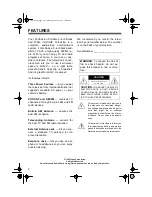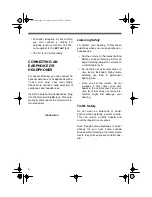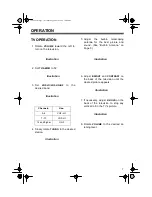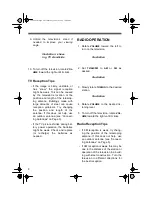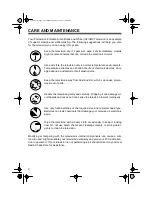
4
• Dispose of old batteries promptly
and properly. Do not burn or bury
them.
• At the end of a nickel-cadmium bat-
tery’s useful life, it must be recycled
or disposed of properly. Contact
your local, county, or state hazard-
ous waste management authorities
for information on recycling or dis-
posal programs in your area. Some
options that might be available are:
municipal curbside collection, drop-
off boxes at retailers such as your
local Radio Shack store, recycling
collection centers, and mail-back
programs.
Note: Battery life can vary greatly, de-
pending on how you use your television.
TV operation drains batteries faster than
radio operation.
Using Standard AC Power
To use AC power, connect the supplied
AC adapter to the television’s
DC 12–14V
jack. Then plug the other end into a
standard AC outlet.
Cautions:
• The supplied AC adapter supplies
13 volts DC, delivers 850 milliamps,
and has a center positive plug which
properly fits the television’s
DC 12–
14V
jack. Using an adapter that
does not meet these specifications
could damage the television or the
adapter.
• Always unplug the adapter from the
outlet first before unplugging it from
the television.
Using Your Vehicle’s Battery
Power
You can power the television from your
vehicle’s cigarette lighter socket using
the supplied DC adapter.
Cautions:
• Watching TV while operating a
motor vehicle can present a traffic
hazard.
• Before plugging the adapter’s ciga-
rette lighter plug into your vehicle’s
cigarette lighter socket, make sure
the knurled ring is screwed firmly
onto the plug. See “Changing the
Fuse” on Page 10 for more informa-
tion about the plug.
Plug the small end of the supplied DC
adapter into the
DC 12–14V
jack. Then
unplug your vehicle’s cigarette lighter
and plug the large end of the DC adapt-
er cord into the cigarette-lighter socket.
illustration
16-124c.fm Page 4 Wednesday, June 30, 1999 10:49 AM


